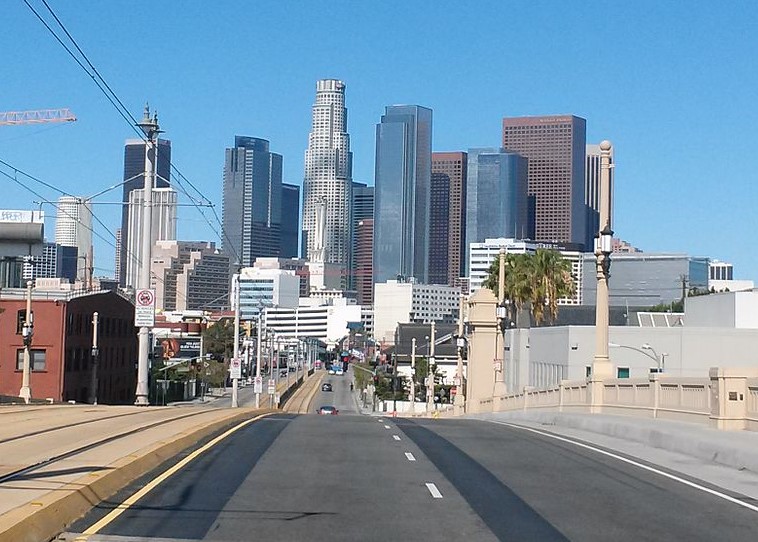By CHUCK GREEN
Office vacancy rates are being monitored closely as the commercial space industry continues to grapple with COVID’s effects on the workplace.
In Los Angeles, office activity stagnated in the first quarter of 2022. One-fifth of total inventory remained vacant and rents remained unchanged, according to Greg Cornfield at Commercial Observer.
Other major metro areas, including New York City, Boston, San Francisco, Washington DC, and Chicago, also continue to experience double-digit vacancy rates. Stemming from remote work due to the variant, San Francisco and DC reportedly kicked off the year with vacancies approaching 20%.
In major U.S. markets vacancies of around 60% were recently shown by Kastle Systems, which measures occupancy by looking at foot traffic into offices.
According to Kastle System’s latest gauge of keycard swipes for nearly 3,000 buildings in 10 major cities, as of March 23, on average, office buildings were only 40% occupied, according to newsbreak.com.
In New York, the office occupancy rate recently hit 37% compared to the volume prior to the pandemic, according to Kastle Systems.
In downtown Chicago, tenants like Macy’s, Uniqlo, and the Gap, dotting the shopping district the Magnificent Mile, didn’t reopen, according to Wolfstreet.com. The retail vacancy rate in the fourth quarter was 9.3% – up from 5.9% the year before – according to CoStar data compiled by Cushman & Wakefield.
Statistica reports that office vacancy rates in the United States averaged 12.3% in the first quarter of 2022.
In Q1 of 2021, vacancy rates were 16.4%. In Q2 of 2021, they rose to 17.2% before dropping to 12.4% in Q3 and Q4, according to Statistica.
The last time office vacancy rates in the United States were below 10% was Q4 of 2019, when they were at 9%.
What do analysts say?
During a recent Yahoo Finance News webcast, Rebecca Rockey, Global Head of Economic Analysis and Forecasting at Cushman & Wakefield, said part of the reason why vacancies may appear to remain high in some markets is because of an increase in supply.
“We’re still dealing with an ongoing supply wave which was ramping up just before the pandemic and, of course, is now finally coming to the market,” Rockey said.
Rockey said where there is an influx in supply, vacancies could continue to climb because of the amount of construction hitting the market.
Jessica Morin, Head of U.S. Office Thought Leadership at CBRE Research, has an upbeat outlook on leasing activity moving forward.
“The U.S. office market is gradually recovering from the negative impact of the pandemic. Following six consecutive quarters of negative demand that pushed vacancies to a high of nearly 17%, demand returned positive in the fourth quarter of 2021, and vacancies began to edge downward,” Morin said.
More broadly, Morin said “despite still low physical occupancies in office buildings, leasing activity rebounded in the second half of 2021, faster than most people anticipated. As employment gains and the return to office resumes, demand for office space will improve.”
Morin said much remains to be seen about how office space will evolve as society adopts hybrid work for the long term. However, the “next normal” seems to be nearing as COVID-19 cases rapidly decline, and more employees return to the office.
CBRE’s economists forecast that average vacancies in the US office market will climb back to its 30-year average of roughly 15% by 2026.
While employees are expected to return in person, the way people work in the offices will likely be much different in 2022 and beyond.
Phil Ryan, Director of U.S. Office Research for JLL, a Boston, MA, global real estate and investment management service provider, told The Mortgage Note that the real estate industry is preparing for the changes.
“Proactive landlords and developers are taking a more well-rounded approach to their space, focusing not simply on flexibility and workspace utilization, but also technology amenities focusing on employee health, well-being, and sustainability,” Ryan said.
In some cases, owners are creating spec suites or other turnkey products to attract tenants with more flexible and less-structured needs.
What does this mean for lenders?
Commercial and multifamily mortgage loan originations jumped in 2021 and are expected to continue booming in 2022, the Mortgage Bankers Association reported at its 2022 Commercial/Multifamily Finance Convention and Expo.
Hotel (+167%), office (+122%), industrial (+113%), and retail properties (+109%) saw huge gains in originations compared to Q4 2020. Multifamily property originations rose by 57%, while health care properties saw a 17% drop compared to Q4 2020.
Industrial property originations rose 96% from Q3 2021. Hotels (+42%), offices (+39%), multifamily (+35%), retail (+6%), and health care properties (+2%) all saw increases as well.
Total commercial and multifamily mortgage borrowing and lending is expected to exceed $1 trillion for the first time ever in 2022, up 13% from 2021’s estimated volume of $900 billion.
Story ideas? Email Editor Kimberley Haas: [email protected]
